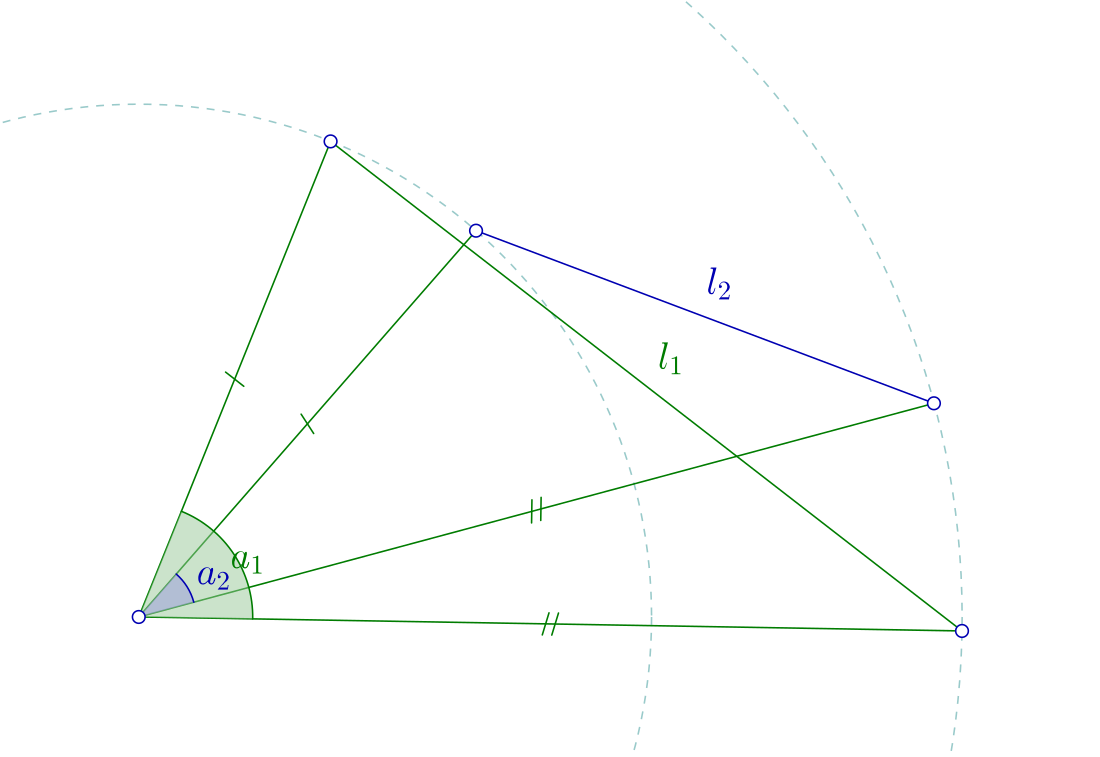Top Qs
Timeline
Chat
Perspective
Hinge theorem
Geometry theorem relating to triangles From Wikipedia, the free encyclopedia
Remove ads
In geometry, the hinge theorem (sometimes called the open mouth theorem) states that if two sides of one triangle are congruent to two sides of another triangle, and the included angle of the first is larger than the included angle of the second, then the third side of the first triangle is longer than the third side of the second triangle.[1] This theorem is given as Proposition 24 in Book I of Euclid's Elements.

Remove ads
Proof from the law of cosines
The theorem is an immediate corollary of the law of cosines.[2] For two triangles with sides and with angles and opposite the respective sides and , the law of cosines states:
The cosine function is monotonically decreasing for angles between and radians, so implies (and the converse as well).
Remove ads
Scope and generalizations
The hinge theorem holds in Euclidean spaces and more generally in simply connected non-positively curved space forms.
It can be also extended from plane Euclidean geometry to higher dimension Euclidean spaces (e.g., to tetrahedra and more generally to simplices), as has been done for orthocentric tetrahedra (i.e., tetrahedra in which altitudes are concurrent)[2] and more generally for orthocentric simplices (i.e., simplices in which altitudes are concurrent).[3]
Remove ads
Converse
The converse of the hinge theorem is also true: If the two sides of one triangle are congruent to two sides of another triangle, and the third side of the first triangle is greater than the third side of the second triangle, then the included angle of the first triangle is larger than the included angle of the second triangle.
In some textbooks, the theorem and its converse are written as the SAS Inequality Theorem and the SSS Inequality Theorem respectively.
References
Wikiwand - on
Seamless Wikipedia browsing. On steroids.
Remove ads











